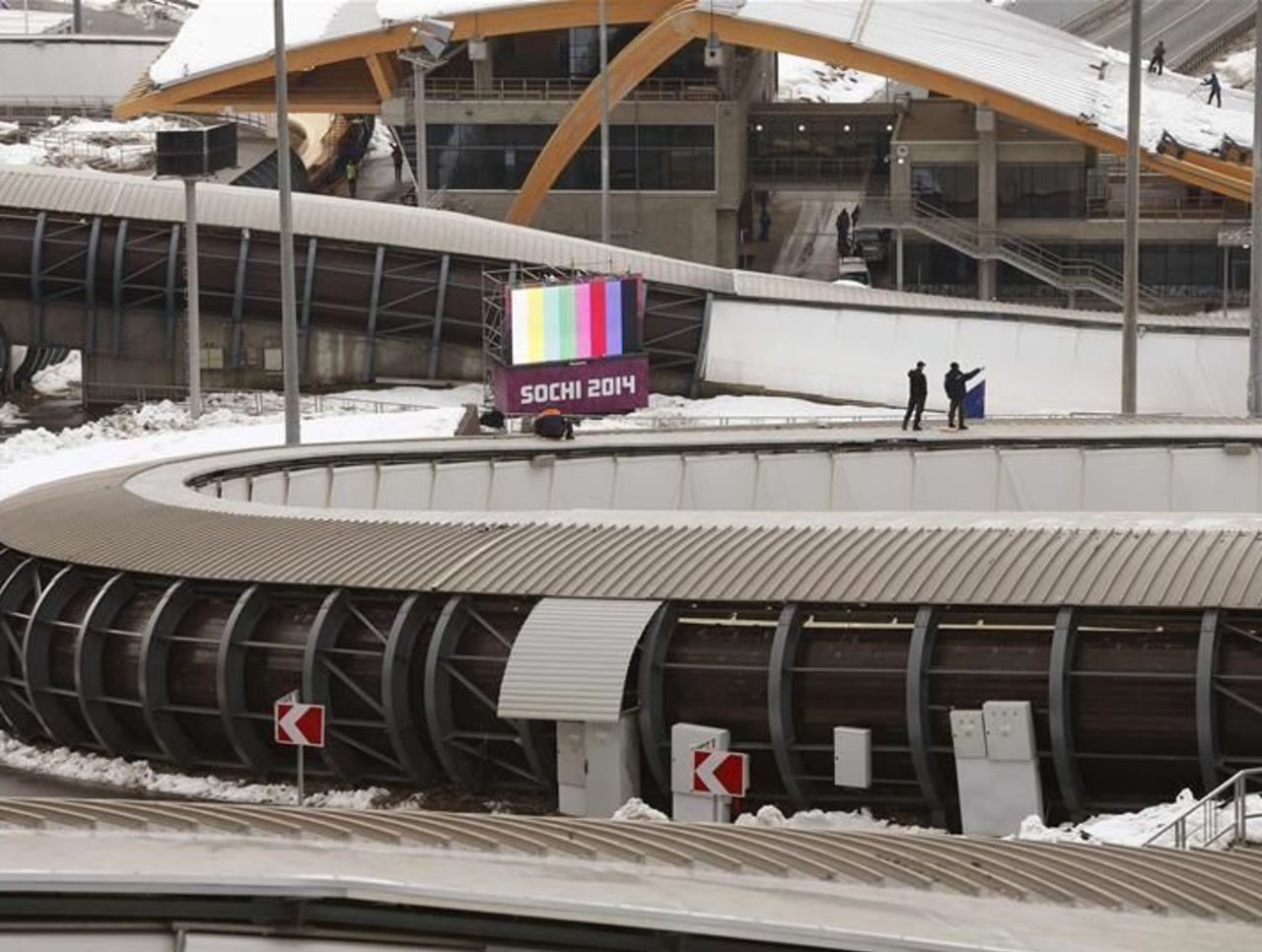Winter Olympics preview: Bobsleigh
***
History
Bobsleigh originated in the Switzerland resort village of St. Moritz in the late 19th century when tourists began repurposing delivery sleds for racing down the mountain roads. The first bobsleigh track was built in St. Moritz around 1870 and the first formal competition took place in 1884. Tracks began to incorporate twists and turns as the sport evolved, while wooden sleds were eventually replaced by ones made of materials like metal, fibreglass and carbon fibre. Bobsleigh became an Olympic event in 1924 - one year after the founding of the International Bobsleigh & Skeleton Federation - and the two-man event was introduced in 1932. The event was not included in the 1960 Olympics due to a lack of venue. A women’s event was added in 2002.
Events
Men’s two-man, Men’s four-man, Women’s two-man
Venue: Sliding Center Sanki

Located 60 kilometers (37 miles) northeast of Sochi, Sliding Center Sanki was built across the northern slope of the Aibga Ridge after much environmental controversy. The area is also part of a habitat for the endangered Northern Caucasus Brown Bear, which prompted organizations such as Greenpeace Russia to protest its location and suggest as many as 10 other places a track could be built. The IOC approved the track in 2009 and it was constructed at an official cost of 135.7 million rubles. The track length for bobsleigh events is 1,365 meters, with 19 turns and an overall vertical drop of 132 meters.
The Top Story
While plenty of attention will be on the front-runners and medal favorites from countries like Germany, Switzerland, Canada, the United States and Russia, the Jamaican bobsleigh team has vaulted into the position of sentimental favorite after the country qualified for the first time since 2002. The 1988 crew - the first Jamaican bobsleigh team to qualify for the Olympics - was immortalized in the popular film “Cool Runnings,” and the 2014 crew capitalized on that popularity by funding their trip to Sochi through crowdfunding websites like Indiegogo and Crowdtilt. They raised nearly double the $80,000 they required in a matter of days.
Five Names To Remember
Steven Holcomb (United States) - Two-man, four-man: Holcomb’s gold medal in the four-man event in 2010 snapped a 62-year drought for the United States. The victory was even more remarkable considering Holcomb’s career was nearly derailed by a debilitating eyesight condition called Keratoconus. The 33-year-old pilot is coming off a dominant World Cup season that included five first place finishes in two-man competition as well as four in four-man.
Francesco Friedrich (Germany) - Two-man, four-man: Friedrich became the youngest world champion in the two-man bobsleigh when he captured the 2013 title before turning 23 years old. Nicknamed “Frederick the Great,” Friedrich appears to be the next big name in German bobsleigh, and a gold medal in Sochi would likely solidify that position for him.
Beat Hefti (Switzerland) - Two-man, four-man: Hefti, 36, is appearing in his fourth Olympic games still looking for a medal better than bronze. The pilot captured one bronze medal in 2002 and two in 2006 before being shut out in 2010. As Switzerland’s top bobsleigh medal contender, Hefti carries the hope and pride of the nation that invented the sport. He placed second in the two-man event at the 2013 World Championships and captured a pair of two-man World Cup victories this season.
Kaillie Humphries (Canada) - Two-man: Humphries has not really slowed down since winning gold at the 2010 Olympics, piloting her sled to back-to-back World Championships in 2012 and 2013 and capturing three victories on the World Cup circuit this season. Known as “The Blond Bomber,” Humphries is one of Canada’s best hopes to defend the gold medal she won in Vancouver.
Elana Meyers (United States) - Two-man: Meyers is likely Humphries’ biggest challenger. Meyers won bronze in 2010 and has been improving since then, winning consecutive World Cup titles in mixed team competition in 2012 and 2013 and placing second behind Humphries in the women’s two-man. A pair of World Cup victories and five second-place finishes this season suggest Meyers is ready to take the next step and capture America’s first women’s bobsleigh gold medal since 2002.
Three Terms You Need To Know
Pushers: The two members of a four-man team who sit in the middle of the sled. Their job is to push the sled up to speed at the start and provide extra weight in the sled.
Runners: Round beveled steel blades on the bottom of the sled. A bobsleigh has four runners - two at the front and two at the back. Runners are not sharp and allow the sled to glide along the ice.
Line: The route a sled takes down the track. Some pilots prefer to take a high line along turns, gliding towards the top edge of the track, while others will hug the bottom edge for a low line.
Previews for each individual event below.